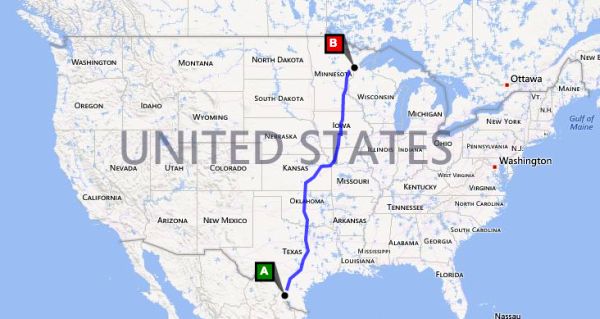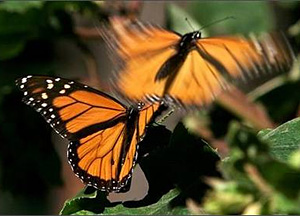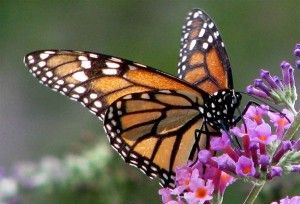Obama’s ‘Butterfly Corridor’ will Help Monarchs Migrate
 |
|
| The US Department of Transportation and Fish and Wildlife Service will help rehabilitate butterfly habitats alongside Interstate 35, a federal highway that extends from the Texas-Mexico border to Minnesota. | |
|
|
Washington D.C. – US President Barack Obama, a friend to bees and other pollinating insects in peril, has unveiled his national strategy to mitigate honey bee loss, increase the Monarch butterfly population, and restore the habitats of both insects, whose health is essential to our food supply.
 |
The program will depend heavily on federal agencies and will also involve Mexico and Canada, since bees and butterflies know nothing of state laws and don’t really care about borders.The strategic report includes a section on “expanding pollinator habitat on rights-of-way.” This doesn’t mean the feds will tell bees and butterflies who flies first, but rather that the US Department of Transportation and US Fish and Wildlife Service will help rehabilitate butterfly habitats alongside Interstate 35 — a federal highway that extends from the Texas-Mexico border to Duluth, Minnesota.
That’s a key path or “flyway” for Monarch butterflies, who winter in Mexico before making a multi-generational migration, laying eggs and dying in the southern US, and leaving new, young butterflies to finish the journey north.
(The Monarchs’ incredible migration patterns have caught many imaginations in recent years, thanks in large part to Barbara Kingsolver’s 2012 novel Flight Behavior, which coincided with the release of Flight of the Butterflies, an IMAX documentary.)
 |
The Monarchs’ numbers have been dwindling, in part due to the loss of a nectar-producing flowers and milkweed — an important source of butterfly nourishment that has been depleted in the American midwest by agriculture and the herbicide Roundup.Because the government has access to federal “rights-of-way” such as the interstate, agencies will be able to coordinate efforts to rehabilitate prairie vegetation, educate “target audiences,” and provide spring and summer breeding habitats along the flyway. The Fish and Wildlife Service has allocated $3.2 million (p.31) specifically for Monarch conservation, and will prioritize projects near the corridor.
While a highway seems an unlikely sanctuary, the conditions along I-35 sound pretty ideal, according to the report: “They constitute large land acreage on a cumulative basis, are generally maintained in sunny areas with low vegetation height (ideal pollinator habitat), and often extend for considerable distances, thereby potentially acting as corridors for species movement and adaptation to climate change.”
If the eastern Monarchs’ road trips prove successful — and sufficiently romantic — the Pollinator Health Task Force hopes their population will increase from 56.5 million to 225 million by 2020.